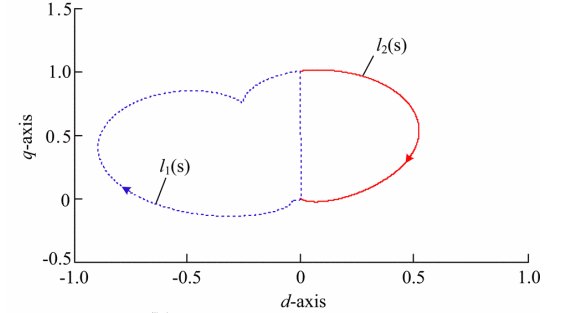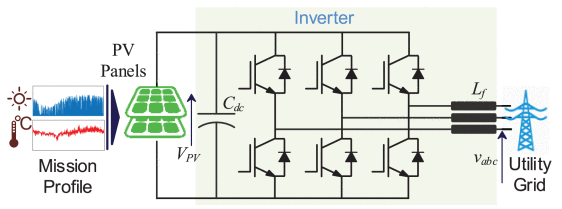Review of Grid-forming Inverters in Support of Power System Operation
This paper presented an overview of the characteristics of GFM inverters by comparison with those of traditional grid-following inverters, and the recent innovations in GFM inverter technologies were highlighted, summarizing the benefits and opportunities of GFM inverters for grid interactive operations under different scenarios.
1.The functions of GFM inverters.
GFM inverters are generally designed as voltage sources that regulate their voltages and frequencies in synergy with power grids through various GFM functions. Other GFM functions have also been developed for GFM inverters, such as the self-synchronization function, coordinated control function, seamless mode transition function, and black-start functions. The self-synchronization function was proposed particularly for two-stage DER-based inverters, integrating DC-link voltage control with droop control functions. The coordinated control function was developed to support the operation of inverters under unbalanced grid conditions. The seamless mode transition function enables flexible operation of a microgrid between grid-connected and islanding operations. Black-start functions provide restoration of the power grid from blackout events with practical considerations. With the implementation of these functions, GFM inverters are able to perform grid regulation and thus enhance the grid stability and reliability under various operating conditions.
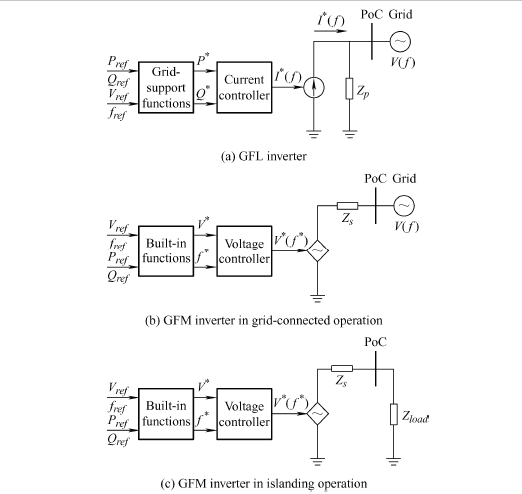
2. The differences between GFM inverters and traditional GFL inverters.
GFL inverters are designed mainly to perform power conversion, feeding high-quality power to the grid with grid-support capabilities within the normal grid limits, beyond which the GFL inverters must be disconnected. On the contrary, GFM inverters are not only able to supply power to the utility grid but also have more support functions, such as providing direct voltage, frequency, and inertia support to the utility grid, islanding operation support with seamless mode transitions, for both grid-connected and islanding operations.
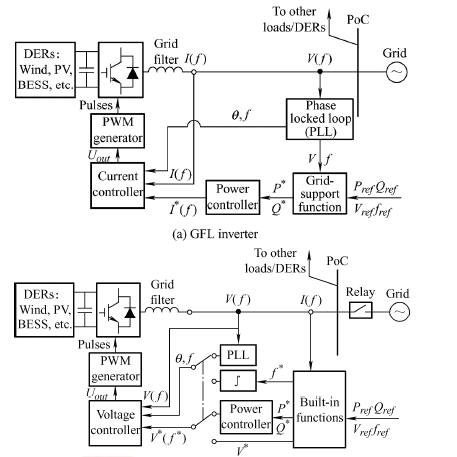
3. Analyzed with recent innovations in GFM technologies .
The collective black-start configuration has improved inverter redundancy with low system cost by stacking multiple smaller GFM inverters compared to the fully functional configuration with a single inverter. However, load-sharing and synchronization among these parallel GFM inverters, which are enabled through droop control, VSG, etc., have become the main focuses for practical realization. After the build-up of initial voltage provided by these DER- or BESS-based GFM inverters, other loads, DER-based inverters, and generators can be reconnected to the microgrid following certain restoration strategies, resuming the normal operation of themicrogrid from a blackout event.
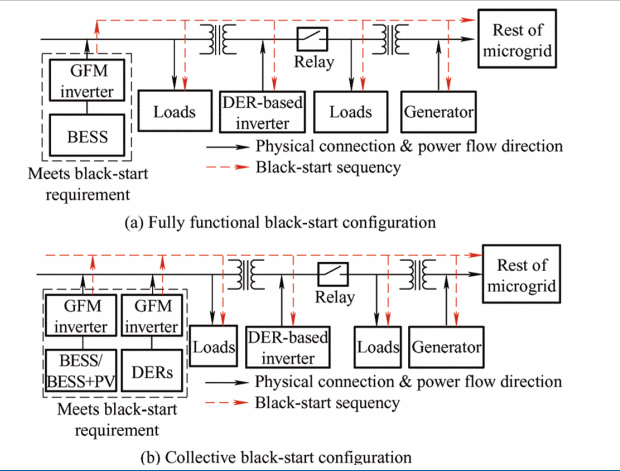
4. Conclusions and recommendations for potential GFM technology advancements.
Significantly more research and development efforts are still required to build on and expand the applications of GFM inverters in support of grid operation ofmodern power systems dominated by inverter-interfaced DERs. More promising technologies are necessary for GFM inverters to contribute materially to largeinterconnected systems (i.e., continental-scale power systems). By incorporating a variety of GFM inverters into large electric grids, the overall system dynamics,stability, and failure modes of the system could be affected; therefore, more research on advanced GFM functions with interconnection techniques (e.g., coordinatedcontrol function, and black start function) is required for these GFM inverters. In addition, more pilot projects of GFM inverter applications are also required to validate the capabilities of GFM inverters, taking into account the grid contingency and end-to-end system performance.
Source: IEEE Xplore
Statement: Respect the original, good articles worth sharing, if there is infringement please contact delete.
IEEE (pronounced "I-triple-E") stands for the Institute of Electrical and Electronics Engineers, a global professional organization dedicated to advancing technological innovation for the benefit of humanity. Founded in 1963 through the merger of the American Institute of Electrical Engineers (AIEE) and the Institute of Radio Engineers (IRE), IEEE has grown into the world’s largest technical professional society, with over 400,000 members across 160+ countries.
